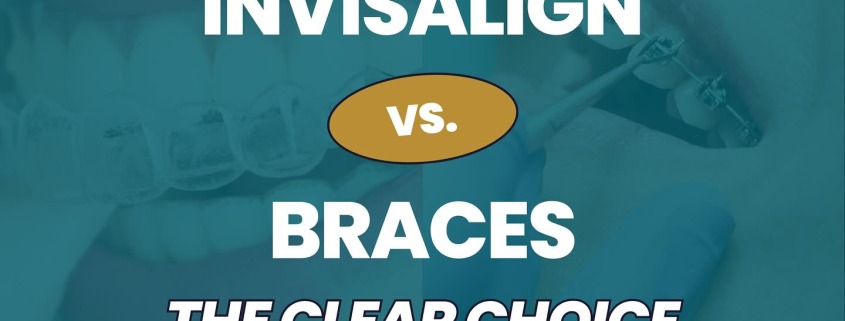Invisalign Aligners vs. Braces: Which Option is Right for You?
Invisalign Vs Braces
Achieving a radiant smile often involves careful consideration of the available options in orthodontics. Many individuals are exploring clear aligners as a modern approach to teeth straightening.
These innovative solutions work to gradually reposition teeth while avoiding the discomfort of traditional metal brackets.
Although dental braces may yield faster outcomes in more complicated cases, the aesthetics of aligners attract those who prefer a subtle treatment.
Aligners offer the advantage of being removable, making the routines of tooth brushing and dental care simpler. By evaluating the benefits and drawbacks of each method, patients can make informed decisions about their orthodontic treatment options, comparing Invisalign aligners and traditional braces to find the most suitable solution for their needs.
Pros And Cons Of Clear Aligners
In today’s world, many individuals seek innovative methods to enhance their dental appearance without the visibility of traditional options. Clear devices, renowned for their aesthetic appeal, are considerably less noticeable than standard metal braces, making them a favored choice among patients who prioritize their smile.
One of the main advantages is their removability, facilitating easy eating and promoting better oral hygiene compared to fixed solutions.
This flexibility requires discipline; users must consistently wear the aligners for 20-22 hours a day to ensure effective therapy.
Aligners might not be the best fit for complex dental cases, where advanced technology like lingual braces may provide superior outcomes. Potential expenses can be a factor; initial costs for metal braces, Invisalign treatment, or lingual braces can vary significantly, impacting the patient’s overall spending and oral hygiene therapy.
Choosing The Right Orthodontic Treatment
Deciding on the most suitable option for dental correction can greatly impact one’s overall confidence and well-being. With various approaches available, patients must consider their unique requirements and preferences.
Each treatment method addresses specific concerns, like aligning teeth or improving bite functionality.
Traditional braces, known for their effectiveness, may raise questions about aesthetics, while aligners provide a more subtle alternative for those prioritizing appearance.
Factors such as the cost of Invisalign compared to other methods can influence choices. Comfort, ease of maintaining hygiene, and lifestyle compatibility are also crucial in shaping a patient’s decision-making process.
By evaluating these elements carefully, individuals can make informed choices that align with their personal goals and financial capabilities.
| Treatment Method | Effectiveness | Aesthetic Appeal | Cost Considerations |
|---|---|---|---|
| Traditional Braces | Highly effective for alignment | Less aesthetically pleasing | Generally lower initial cost |
| Aligners (e. g. , Invisalign) | Effective for mild to moderate cases | More discreet and aesthetically appealing | Typically higher cost |
The Cost Comparison Between Options
Making a choice in your dental journey can significantly impact your finances. The costs tied to orthodontic treatment vary widely, with traditional metal braces generally falling between $2,500 and $9,000, influenced by the complexity of each case and the duration of treatment time.
On the other hand, clear aligners often present a price range of $3,000 to $8,000.
While both treatment options can effectively straighten your teeth, their long-term financial implications warrant careful consideration.
For example, maintenance associated with braces may add to overall expenses, while aligners, such as Invisalign, typically involve fewer visits to the orthodontist. It’s important to weigh the pros and cons of aligners and traditional braces, including treatment time, cost, and the aesthetics of options like ceramic and lingual braces, to determine the best orthodontic treatment for straightening your teeth.
Benefits Of Invisalign Aligners
A contemporary approach to achieving dental alignment has transformed the way people think about orthodontic treatment. Invisalign has been designed to help enhance aesthetic appeal by making them less visible than traditional braces.
Many patients find that these aligners offer superior comfort, as they are crafted from a soft material that minimizes mouth irritation.
The convenience of removing aligners allows for easier maintenance of oral hygiene compared to braces, which often present challenges in cleaning.
Customized treatment plans utilize advanced 3D imaging technology to ensure a perfect fit, and in many cases, patients discover that the treatment is right for achieving faster results than with conventional braces, making it an effective alternative to traditional metal braces. health benefits significantly contribute to their overall effectiveness and appeal as an alternative to traditional braces.
Clear Aligners
- Clear aligners are less visible than traditional braces, enhancing aesthetic appeal.
- They are made from soft materials that reduce mouth irritation, offering superior comfort.
- Aligners can be removed, making it easier to maintain oral hygiene compared to traditional braces.
- Advanced 3D imaging technology is used to create customized treatment plans for a perfect fit.
How Invisalign Works For Patients
For individuals seeking a discreet way to enhance their smiles, clear aligners offer a modern alternative to traditional orthodontic methods. Many find this treatment to be a more comfortable and less conspicuous option than metal braces.
During the initial consultation, your dentist will assess your dental history and treatment goals, using clinical examination and imaging to create a tailored plan that suits your needs.
This process leads to the development of custom treatment plans, which include creating 3D digital models to map your specific journey.
Patients are provided with their aligners alongside detailed care instructions, ensuring they understand how to manage the necessary adjustments. Consistent wear of these invisible braces is essential for achieving optimal results, often making it a better option than traditional metal braces.
Maintaining Oral Hygiene With Braces
Maintaining cleanliness in your mouth can be particularly challenging during orthodontic treatment. The presence of braces often means that food particles can get trapped, requiring a more diligent approach to hygiene than with traditional aligners.
By focusing on a consistent routine, you can navigate the specific hurdles that come with wearing braces.
Brushing twice daily is crucial for minimizing plaque buildup and ensuring your teeth remain healthy.
It is advisable to use a soft-bristled toothbrush that caters specifically to brace wearers.
Be mindful of brushing around the brackets and wires to reach all surfaces thoroughly, as neglecting these areas can lead to complications. Flossing, although it may feel cumbersome, is an essential practice that can help you combat residue accumulation between teeth. When choosing between Invisalign, lingual braces, and ceramic braces, it’s important to weigh the pros and cons, as Invisalign aligners may offer advantages such as a faster treatment duration and a more discreet appearance compared to traditional metal braces, making them a better option for some patients.
Oral Hygiene During Orthodontic Treatment
- Brushing twice daily can reduce plaque buildup by up to 50% in brace wearers.
- A soft-bristled toothbrush is recommended to prevent damage to braces while ensuring effective cleaning.
- Flossing can remove up to 80% of food particles trapped between teeth that brushing alone might miss.
- Invisalign aligners can shorten treatment time by as much as 30% compared to traditional braces for some patients.
The Impact On Your Smile Journey
Transforming your appearance can profoundly shape your interactions with others, as a captivating smile is often the first impression that we make. Many individuals undergoing orthodontic treatment experience increased self-esteem and confidence, leading to a noticeable boost in their social life.
Braces have been around for decades, but options such as clear aligners like Invisalign offer a modern twist.
While these aligners tend to be more expensive than metal braces, their removable nature can provide a level of comfort that many appreciate.
Personal stories highlight the emotional and social effects of orthodontic treatment, showcasing how the journey to straight teeth alters perceptions and enhances connections.
Treatment Time For Braces Vs Aligners
The process of straightening teeth can be influenced by various factors, leading to differing durations for achieving desired results. For instance, treatment consists of a series of adjustments and methods that vary significantly between options.
Traditional systems generally require more time, averaging 18 to 24 months, whereas clear options may complete in about 6 to 18 months.
The severity of dental issues plays a critical role in determining these timeframes, as does patient compliance; wearing invisalign aligners for the recommended 20-22 hours daily can notably shorten the overall duration of treatment.
Additionally, invisalign treatment may require fewer visits for adjustments compared to metal braces and invisalign, which necessitate regular orthodontist appointments. Understanding these elements can assist individuals in making informed decisions about their orthodontic treatment options.
| Treatment Type | Average Duration | Adjustment Visits |
|---|---|---|
| Traditional Braces | 18 to 24 months | Regular orthodontist appointments |
| Clear Aligners (Invisalign) | 6 to 24 months | Fewer visits required |
| Patient Compliance | Wearing aligners 20-22 hours daily | Can shorten treatment duration |
Choosing the Right Orthodontic Treatment
Selecting the right orthodontic treatment depends on multiple factors, including:
- Complexity of the Case: Braces are often more suitable for severe orthodontic issues, such as significant bite misalignments or heavily crowded teeth. Aligners, while effective for mild to moderate cases, may not provide the same level of correction for complex problems.
- Aesthetic Preferences: Many patients prioritize the appearance of their orthodontic treatment. Aligners are nearly invisible, making them an excellent choice for individuals who want to maintain a natural look during treatment. On the other hand, modern braces, including ceramic and lingual braces, offer less conspicuous options compared to traditional metal braces.
- Lifestyle Compatibility: The removability of aligners makes them a convenient choice for active lifestyles, allowing patients to eat their favorite foods and maintain a thorough oral hygiene routine without restrictions. However, this flexibility requires a high level of discipline to wear the aligners for the recommended 20-22 hours a day.
- Budget: Comparing the costs of braces and aligners is essential, as initial pricing and long-term maintenance can vary. Additionally, potential insurance coverage and payment plans can help make treatment more accessible.
- Age and Patient Preferences: Younger patients, particularly children and teenagers, may benefit from the structured nature of braces, which remain fixed and do not rely on compliance. Adults, however, often prefer aligners for their subtlety and convenience, especially in professional or social settings.
At Cool Springs Orthodontics, we understand that every patient’s needs are unique. That’s why we offer free consultations for both children and adults to help determine the most suitable treatment plan. Our experienced team, led by Dr. Shaifali Grover, will evaluate your specific orthodontic needs and create a personalized approach to help you achieve a healthy, confident smile. Visit us at 1550 W McEwen Dr Suite 60, Franklin, TN 37067, or call us at 615.778.1800 to schedule your consultation today.





Leave a Reply
Want to join the discussion?Feel free to contribute!